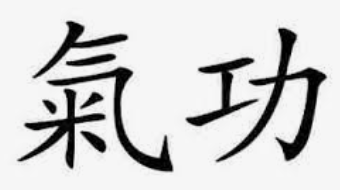Qi Gong is an ancient Chinese wellness practice integrating physical movement, breathing techniques and focused intention.
As I sit down to write this blog post, focused on a healing practice originating from Ancient China, the irony does not escape me. And yet, doesn’t the emergence of COVID-19 make self-care even more important? Thus I’ve decided to leave the politics to politicians, and focus on what I am passionate about — helping people find greater balance, feel less stressed and build vitality, from the inside out.
“Practicing Qi Gong is so simple and so powerful. You cannot do it wrong. You can only do it good, better or best.”
The term Qi Gong translates into “energy cultivation.”
Qi, pronounced chee, is usually translated to mean the life force or vital energy that flows through all things in the universe (more about Qi).
Gong, pronounced gung, means accomplishment or skill that is cultivated through steady practice with the intent of maintaining health and increasing vitality.
In terms of physiology, Qi is the electro-magnetic energy within the body that provides the power for movement and function on all levels ranging from cellular function to gross mechanical actions. Every living cell has an electrical charge on its membrane and within Qi Gong, our energy or Qi is activated through special movements and focused breathing.
Qi Gong practices can be classified as martial, medical or spiritual. All styles have three things in common: Posture, whether moving or stationary, breath and mental focus. Practice sequences vary, ranging from Qi circulation to cleansing and healing the body to Qi storage or emitting Qi to help heal others. At its core, Qi Gong falls is a multidimensional practice of slow gentle, rhythmic movements paired with specific breathing exercises and directed intention.
Within Traditional Chinese Medicine, Qi Gong is used first and foremost for prevention/health maintenance. Built upon the age-old legend that before modern medicine, Chinese physicians were only paid when the patient remained healthy – the Chinese fully embraced the idea that an ounce of prevention is worth a pound of cure. Can you imagine if our current “health care” system operated under such a powerful philosophy?
From a treatment perspective, Qi Gong is recognized to reduce stress, build stamina, increase vitality and enhance the immune system. It has been clinically demonstration through medical research to improve heart failure, blood glucose levels in type 2 diabetes, chronic fatigue syndrome, post-surgical pain, cancer survivorship and many other diagnoses.
Like Yoga, Qi Gong promotes internal awareness and provides opportunity to directly interact with our energetic system, neither of which are included in traditional exercise programs. Specifically, most exercise programs focus on building physical strength and do not directly involve/activate the energetic system, i.e. meridians, extraordinary vessels, five-elements, or emphasize the importance of integrating breathing techniques and directed intention. When the physical, energetic and emotional dimensions are actively assimilated, the health benefits increase exponentially.
As with any system of health care (including Western medicine), Qi Gong is not a panacea. That said, it is a highly effective practice and health care professionals are beginning to recommend Qi Gong as an important form of alternative/complementary medicine. Multiple medical centers and organizations across the US are helping to promote Qi Gong, including Society for Integrative Oncology and Memorial Sloan-Kettering.
Qi Gong has been a tremendous gift on my personal wellness journey and now, more than ever, I am putting this ancient practice to use. A practice that is truly accessible and adaptable to all, Qi Gong enriches lives regardless of age, ability or belief system.





